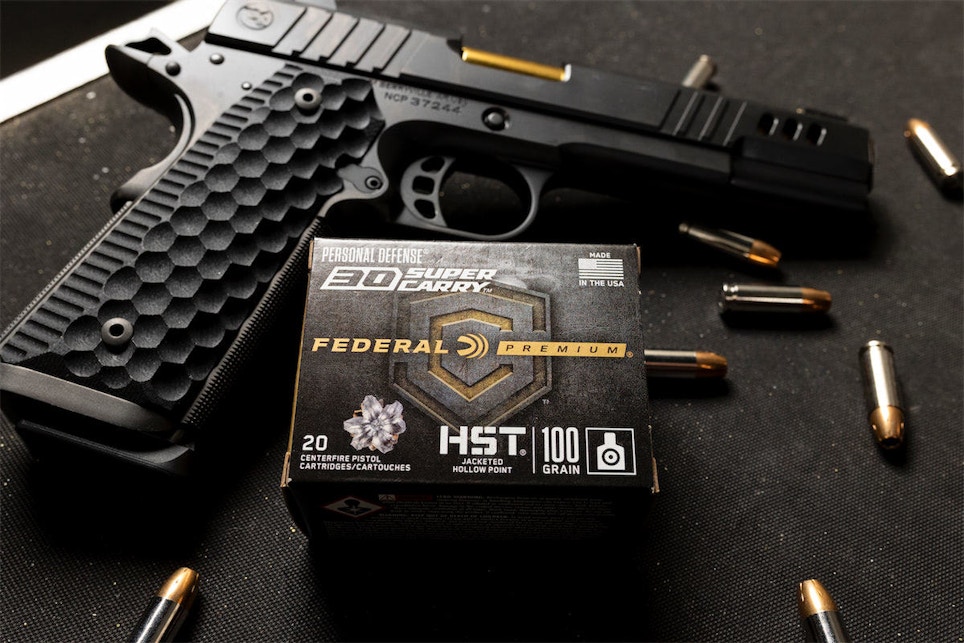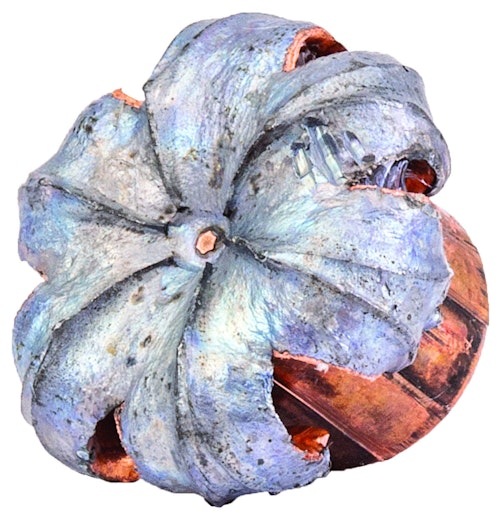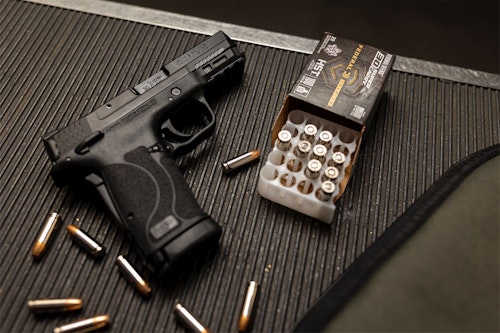“What this world needs is a new defensive round for semi-auto handguns,” said nearly nobody in the last 120 years.
Since the development of the 9mm Luger cartridge back in 1901 and the .45 ACP in 1904, pistol calibers have been pretty well covered. Sure, there are some who have embraced the .40 S&W, .380 ACP, 10mm or even .32 Auto over the years, but most of the competition has been between the 9mm and .45.
Over the decades, the .45 has largely been the domain of the 1911 pistol, and many 1911 aficionados wouldn’t consider carrying anything else. On the other end of the spectrum, many smaller pistols, and especially polymer pistols like Glocks, have dominated the 9mm market.
One phenomenon over the past few years has changed things somewhat. The widespread embrace of concealed carry has led to smaller and smaller handguns. Consequently, the 9mm has reigned supreme in that category, although there are those who like the .380 ACP because of its smaller size and greater capacity. Then came the advent of the newer high-capacity micro-pistols — pocket-sized handguns like the Sig 365 and Springfield Hellcat that hold 12-plus rounds of 9mm, equaling .380 capacity with the superior 9mm performance.
You might wonder how things could get any better. Well, the folks at Federal recently accepted that challenge.
Above Middle Ground
Enter the brand-new 30 Super Carry, the first truly new self-defense cartridge to come along in quite some time. Federal engineers sought to find a middle ground between the .380 and the 9mm, but instead developed a round that resulted in more ammo in the same size magazine as the 9mm with the bonus of very similar ballistics to that time-proven round.
“Every cartridge we carry in a handgun on our person now for self-defense comes from either a law enforcement or a military background,” says Jim Gilliland, pro shooter and federal ambassador. “They’ve all been designed for militaries or for police officers in our communities to protect us, and that’s what we have to choose from.
“Finally, there is a cartridge designed specifically for you and me — the average, everyday citizen who carries for self-defense on a regular basis.”
Gilliland says that during development, Federal engineers had to consider a number of factors to get to the finish line, but the main features they were really concentrating on were capability and capacity.
“With the .45 ACP, we have eight rounds in a single-stack magazine,” he says. “You get 10 rounds in 9mm single-stack magazines, but in 30 Super Carry you get 12 rounds in a standard-size, single-stack magazine. The more ammunition you can carry in your gun with a solid performance, the more you’re going to win that fight.”
The 30 Super Carry also excels in performance. The round gives ballistic and terminal performance similar to the 9mm in a smaller form factor. The 30 Super Carry uses a .312-inch-diameter projectile weighing 100 or 115 grains. And while the casing is actually longer than a 9mm casing by about 0.07 inches, the overall length is similar to 9mm even with the shorter and lighter bullets.
The 115-grain 30 Super Carry loads typically generate a velocity of just under 1,200 feet per second, and have a muzzle energy right around 360 foot-pounds of energy. The 100-grain loads, of course, leave the barrel a little faster — in the 1,250 to 1,400 fps range — and display similar or higher energy than the 115s.
In comparison, a typical 115-grain 9mm bullet leaves the barrel at about 1,100 to 1,150 fps and generates 350 to 360 fpe. That means the 309 Super Carry rounds are very similar in performance, but their size allows two more rounds to be carried in magazines of the same dimension — a true win-win for shooters and concealed carry practitioners.
The Guns
At the time of this writing, there are only two companies manufacturing guns chambered in 30 Super Carry, but that is likely to change as 2022 rolls on. Fortunately for those who want to get a pistol in the caliber right now, the guns currently available are very good pistols, albeit at opposite ends of the price spectrum.
One offering is the Nighthawk Custom GRP (Global Response Pistol). If you’re not familiar with Nighthawk Custom, the company manufactures very high quality 1911-style pistols under the motto of, “One gun, one gunsmith.” And the company’s GRP is no exception to that rule.
The GRP features a 5.4-inch barrel, an overall length of 8.65 inches and weighs in at 36.9 ounces empty. It has an attractive black nitride finish and G10 grips. The pistol has a 12+1 capacity, which is very high for a 1911-style handgun, thanks to the attributes of the 30 Super Carry cartridge.
The gun has a tritium front sight and a Heinie Straight 8 Ledge rear sight. Additionally, the frame is undercut where it meets the trigger guard, and it also has a high sweep beavertail to allow a high grip. Like most Nighthawk pistols, the RMG in 30 Super Carry has a fantastic trigger, and many who have tested the gun/cartridge combination have been able to shoot one-hole groups.
One thing, though: The gun carries an MSRP of $3,499, which definitely puts it out of range for a large percentage of prospective handgun purchasers.
Smith & Wesson is offering two different models in 30 Super Carry, both of which were previously offered in 9mm and .380 ACP. Unlike the Nighthawk offering, they are both polymer, striker-fired handguns. But on the positive side, both have an MSRP of about $520. One is the Shield EZ model (also available in a thumb safety configuration), a small, polymer handgun that would be perfect for those who are wanting a 30 Super Carry for their daily carry gun.
The EZ is designed specifically for easy racking of the slide. The 3.675-inch-barreled pistol features a 10+1 capacity — a good payload for a compact pistol — and ships with two 10-round magazines. The EZ features the M&P’s great 18-degree grip angle, white-dot sights and Smith’s new and improved trigger that seems to get better with every iteration.
The other Smith & Wesson 30 Super Carry offering is the compact Shield Plus. Of course, the gun has a flat-faced trigger that is very good compared to many of the older Shield triggers, along with an optics cut for mounting your favorite red-dot sight. It has very similar measurements to the Shield Plus in 9mm.
The Ammunition
While the number of firearm offerings is pretty limited at this point, ammo manufacturers are embracing the 30 Super Carry. Part of that, of course, is because the same conglomerate that owns Federal also owns a number of other ammunition companies, making it a natural progression to design loads for the cartridge.
Since Federal engineers designed the cartridge, the company is offering two different loads designed for specific purposes. That company’s HST load for 30 Super Carry features a 100-grain hollow-point bullet that leaves the barrel at about 1,250 fps and generates nearly 350 fpe. In ballistic gel, it is touted to expand to over a half inch and penetrate some 15.5 inches.
Additionally, Federal’s American Eagle line has a 100-grain 30 Super Carry load that duplicates the velocity, energy, recoil and point of impact of the HST, making it perfect for high-volume training on a leaner budget. These two offerings from Federal are likely to be widely embraced by shooters and would make good additions to any ammo inventory.
The folks at Speer, another ammo maker owned by Federal’s parent company Vista Outdoors, are offering a Gold Dot round in 30 Super Carry that features a 115-grain bonded, jacketed hollow-point bullet ideal for self-defense situations. The slug exits the barrel at about 1,150 fps and generates about 330 fpe. If that sounds familiar, that’s because it is very similar to the ballistics for many common 9mm 115-grain loads.
CCI, another Vista Outdoors brand famous for outstanding practice ammo at a reasonable price, has also gotten in on the fun. That company’s 30 Super Carry offering in its Blazer line features a 115-grain FMJ bullet for plinking and training. The 50-round pack has an MSRP of $30.99.
Lastly, Remington has boarded the 30 Super Carry train with two loads already on the market. Big Green’s HTP jacketed hollow-point load launches the 100-grain bullet at about 1,250 fps and generates 347 fpe. The company says it will expand to about twice its original diameter. Remington’s UMC full metal jacket load also features a 100-grain bullet with similar velocity and energy numbers.
Take a Shot
In the end, is the new 30 Super Carry destined to become the hottest concealed carry round, unseating the 9mm as king of the hill? Probably not. Because of the sheer number of 9mm pistols in Americans’ hands today, there are always going to be those who retain it as their caliber of choice. Consequently, there should always be plenty of space on your ammo shelves for 9mm — both practice and defensive rounds.
On the other hand, we’ve all seen how hot, new rifle cartridges developed for specific purposes have carved themselves a niche, and the purpose-built 30 Super Carry might just do the same in the concealed carry handgun market. In the end, it will be the consumer who will decide the fate of the 30 Super Carry — both guns and ammunition. Retailers would be wise to give their customers a shot at both, as it’s a capable new cartridge that many would like to see get a fair shake in the marketplace.









